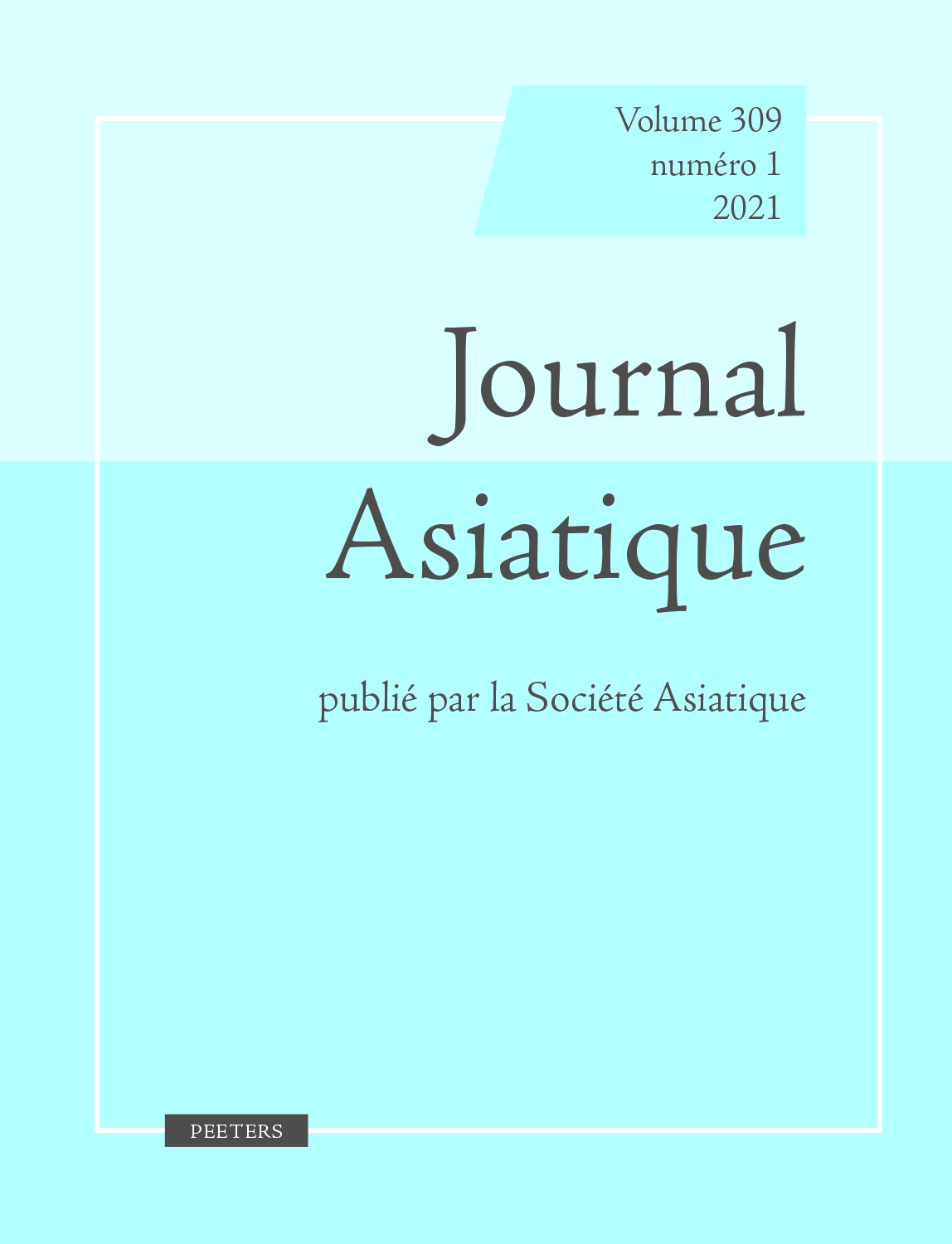 previous article in this issue previous article in this issue | next article in this issue  |

Preview first page |
Document Details : Title: Oedipus and Jocasta on a 'Bactrian' Silver Bowl in the Hermitage, c. 350-500 Author(s): DAN, Anca , GRENET, Frantz Journal: Journal Asiatique Volume: 310 Issue: 1 Date: 2022 Pages: 55-79 DOI: 10.2143/JA.310.1.3290950 Abstract : Elites of the Hunnish states, including Tokharistan (ancient Bactria) and Northwest India from the 4th century, not only appreciated Greco-Roman art, inherited or imported, but also had a good knowledge of the Hellenic mythological cycles. Among the small silver bowls called 'Bactrian', attributed by Boris Marshak to the period after the Sasanian withdrawal from Central Asia, the one discovered at Kustanai (Hermitage, S-62) is decorated with scenes inspired mainly by Sophocles’ Oedipus Tyrannus. While following the text sometimes literally (e.g. by portraying Oedipus as a child of Fortune), and using a Hellenistic iconographic repertoire which had become 'Indianized' during the Kushan period, the artist who executed the model transposed the Sophoclean plot in five scenes, adapting it to his customers’ interests: the son’s marriage to his mother, highlighted on this vase like nowhere else in ancient art, recommends the couple as a Zoroastrian ethical model. The tragic fault now lies with the servant, who did not expose the newborn Oedipus and did not tell the truth on the parricide: the confrontation between the lying servant and the sincere, generous Jocasta, gives the key to a cathartic reading of this vase. Les élites des États huns comprenant le Tokharistan (ancienne Bactriane) et l’Inde du Nord-Ouest à partir du IVe siècle apr. J.-C. appréciaient l’art gréco-romain hérité ou importé et avaient même une fine connaissance des cycles mythologiques helléniques. Parmi les petits bols d’argent dits «bactriens», datés par Boris Marshak après le retrait sassanide de l’Asie Centrale, le bol découvert à Kustanai (conservé à l’Ermitage, S-62) est décoré de scènes inspirées principalement de l’Oedipe roi de Sophocle. Tout en suivant le texte parfois littéralement (comme lorsqu’il fait d’Oedipe un enfant de la Fortune) et en utilisant un répertoire iconographique hellénistique indianisé à l’époque kouchane, l’auteur du modèle a transposé le récit sophocléen en cinq scènes, en l’adaptant aux intérêts de sa clientèle: le mariage du fils avec la mère, mis en avant sur ce vase comme nulle part ailleurs dans l’art antique, recommande le couple comme un modèle éthique zoroastrien. La faute tragique revient désormais au serviteur qui n’a pas exposé Oedipe nouveau-né et n’a pas relaté la vérité sur le parricide: la confrontation du serviteur menteur avec la sincère et généreuse Jocaste, représentée sur le médaillon central, offre la clé de lecture cathartique de ce vase. |
|


